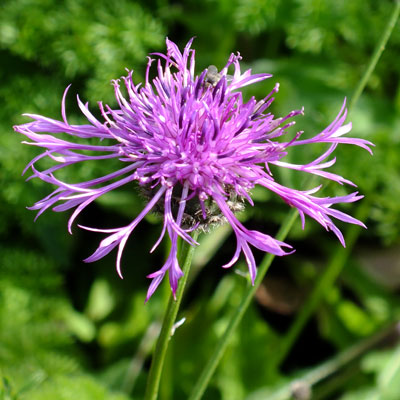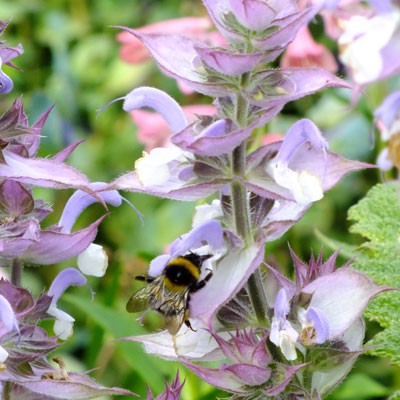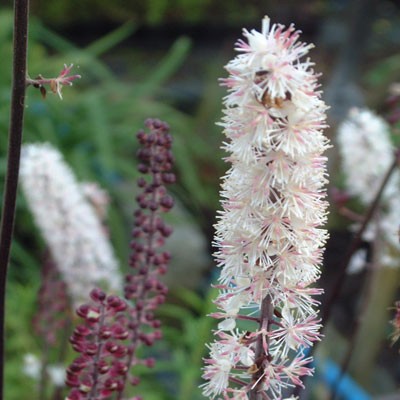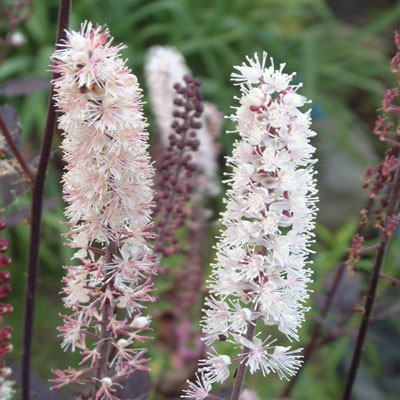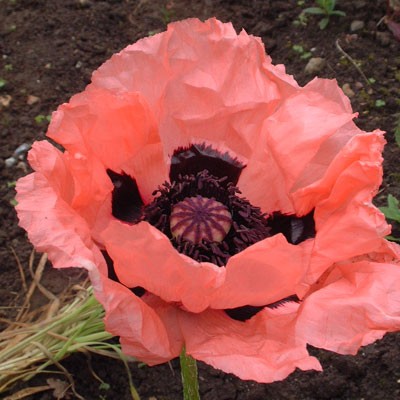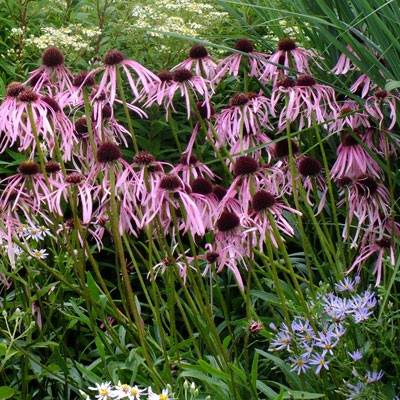Description
Centaurea scabiosa
Greater Knapweed. Centaurea scabiosa is larger than Lesser Knapweed and a more showy species, having larger flower heads with each flower head always carrying a showy outer ring of infertile florets. The leaves are more divided and attractive also. This plant was once much sought after for it’s use as a vulnerary (wound healing) particularly for curing Whitlows or Felons, those little abscesses that occur near finger and toe nails. This species has narrower distribution than Lesser Knapweed, being confined largely to chalky soils in the South of England.
Knapweeds
The knapweeds can be distinguished from their close cousins, the thistles, by their involucral bracts (small leaf-like structures surrounding the base of the flower) and their leaves which are both non-spiny. They are also close to saw-wort, which lacks the comb of teeth that tip each of the involucral bracts.
Centuarea are named in honour of the Centaur, Chiron who was a great healer and teacher. Chiron was not of the race of Centaurs proper, but an immortal; son of Kronos and a nymph. His appearance resulted from Kronos transforming mid-union into a horse to avoid being discovered by his true wife. Despite Chiron’s great knowledge as a teacher he was unable to cure himself from a wound accidentally received from an arrow tipped with Hydra venom and shot by his pupil Hercules. Unable to cure himself he voluntarily chose death and a place among the stars as the constellation Centaurus.
Greater Knapweed – Hardhead, Ironhead, Churls Head, Logger Head, Horse Knops, Matte Felon, Mat Felon, Bottleweed, Cowede, Boltsede.
Composite Flowers
The composite flower head is the defining character of the Asteraceae. What appears to be a single daisy flower is in fact a flower head comprising of many many individual smaller flowers, in many cases two different forms of flower that together form the distinctive daisy structure. They make excellent flowers for insects to visit as each individual head is actually a multitude of nectar bearing flowers that the insect can collect from one after another.
There is a wealth of detail to study in the morphology of daisies along with a dictionary of names for the parts. I shan’t go into any great depth, but a little more detail might be interesting. The central part of the flower is called the disc and is comprised of a tightly packed array of more or less symmetrical flowers with quite small petals. These open from the outside inwards, with the outside being the oldest. Interestingly, if you study the arrangement of these flowers they are arranged in a series of spirals from the centre. You will be able to detect right and left handed spirals and if you take the time to count these spirals you will find that the number of left and right handed spirals will be two adjacent numbers from the Fibonacci series (This is a sequence of numbers made by by adding up the preceding two numbers in the sequence; Hence 1,1,2,3,5,8,13,21,34….)
The showy outer petals of a daisy are flowers of a different type. These are the asymmetrical ray florets. They lack the nectar of the disc florets and have the function of attracting insects (and gardeners!).
There is a third type of flower, a ligule, which is a asymmetrical flower with one elongate petal, that can occur in the disc region. These can give flower heads a shaggy appearance and can be seen in plants such as Ligularia or Eupatorium.
Some of the daisy family have flowers that track the sun, a mechanism designed to make the flower a warmer more inviting environment for pollinators, especially in cold but sunny weather. The consummate example of this is the Sunflower, Helianthus, which gets in name from its tracking of the sun rather than from its sun-like appearance.


















































